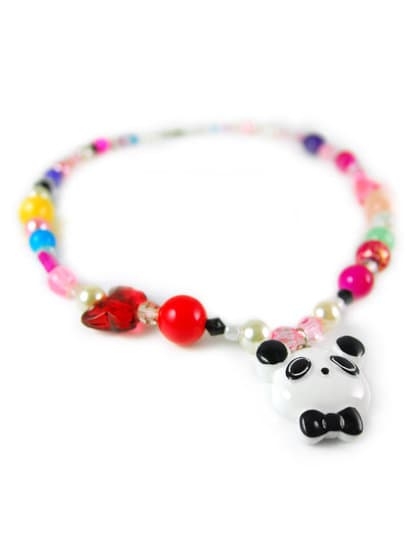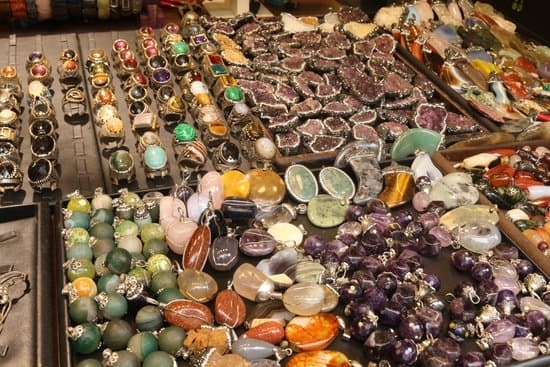Fine jewelry and high jewelry are known for their exquisite craftsmanship, luxurious materials, and timeless elegance. These pieces hold significant value in the world of fashion and luxury, often becoming treasured heirlooms for generations.
One commonly debated topic within the realm of jewelry is which category – fine or high jewelry – is more expensive. This article will delve into the pricing intricacies of both types of jewelry, examining the factors that contribute to their costs and ultimately providing a nuanced answer to the question at hand.
Fine jewelry typically consists of pieces made with precious metals such as gold, silver, and platinum, adorned with high-quality gemstones like diamonds, sapphires, and emeralds. On the other hand, high jewelry, often referred to as haute joaillerie, features exceptional craftsmanship along with rare and extraordinary gemstones. Both categories embody opulence and sophistication but differ in terms of exclusivity and price.
Before delving into the specific pricing differences between fine and high jewelry, it is important to understand what distinguishes them from each other in terms of materials used, level of intricate detailing or design complexity.
Understanding Fine Jewelry Pricing
When it comes to understanding the pricing of fine jewelry, it is important to consider several contributing factors. One of the primary elements that influence the cost of fine jewelry is the use of precious metals and gemstones. Pieces crafted from materials such as gold, platinum, and diamonds naturally command higher prices due to their inherent value. Additionally, the craftsmanship and labor costs involved in creating fine jewelry also play a significant role in determining its price point.
Renowned fine jewelry brands often employ skilled artisans who meticulously handcraft each piece, resulting in a higher price tag. The reputation and exclusivity of these brands also contribute to the pricing strategy, with luxury brands commanding premium prices for their collections. For example, iconic brands like Tiffany & Co. Cartier, and Bulgari are known for their exquisite designs and impeccable quality, which justifies their high price points.
Each factor mentioned above underscores why fine jewelry can be quite expensive. The combination of precious materials, labor-intensive craftsmanship, and the prestige associated with luxury brands all contribute to the higher cost of fine jewelry on the market.
Exploring High Jewelry Pricing
When it comes to high jewelry, the pricing is often significantly higher compared to fine jewelry. The distinct characteristics of high jewelry, such as the use of rare and exceptional gemstones and diamonds, contribute to the exorbitant cost associated with these pieces.
High jewelry pieces are meticulously crafted using the highest quality materials, often featuring extravagant designs and intricate detailing that add to their luxurious appeal. This level of exclusivity and opulence comes with a substantial price tag, making high jewelry more expensive than fine jewelry in most cases.
Renowned high jewelry brands such as Cartier, Harry Winston, and Van Cleef & Arpels are known for their iconic pieces that boast extraordinary craftsmanship and breathtaking designs. These pieces often command staggering prices due to the exceptional quality of materials used and the intricate workmanship involved in creating them. For example, a single necklace from a high jewelry collection can fetch millions of dollars at auction or when purchased directly from the brand’s boutique.
In addition to the exceptional quality of materials and design elements, the exclusivity and rarity of high jewelry pieces also contribute to their high pricing. Limited edition or one-of-a-kind creations further elevate the value of high jewelry, making it an indulgence reserved for elite clientele who appreciate the artistry and prestige associated with these extraordinary pieces.
| High Jewelry Brand | Price Range (In US Dollars) |
|---|---|
| Cartier | $100,000 – $10 million |
| Harry Winston | $50,000 – $20 million |
| Van Cleef & Arpels | $50,000 – $15 million |
Factors Influencing Pricing Differences
When it comes to the pricing of fine and high jewelry, there are several factors that play a crucial role in determining the cost of these exquisite pieces. Understanding these factors can provide insight into why one type of jewelry may be more expensive than the other. In this section, we will delve into the key influences on pricing discrepancies between fine and high jewelry.
Materials and Gemstones
One of the primary factors that contribute to the difference in pricing between fine and high jewelry is the materials used. Fine jewelry often incorporates precious metals such as gold, platinum, and silver, along with gemstones like diamonds, rubies, emeralds, and sapphires.
On the other hand, high jewelry takes luxury to a whole new level by featuring rare and exceptional gemstones such as fancy colored diamonds, alexandrites, or paraiba tourmalines. The rarity and quality of these materials significantly impact the cost of high jewelry compared to fine jewelry.
Design Complexity and Craftsmanship
The intricate designs and extraordinary craftsmanship involved in creating high jewelry also contribute to its high price tag. High jewelry pieces are often elaborate, with meticulous detailing and complex settings that showcase unparalleled artistry. Master jewelers spend countless hours perfecting every detail, from delicate filigree work to intricate pave settings. This level of craftsmanship elevates the value of high jewelry above that of fine jewelry, which may feature simpler designs and more streamlined production processes.
Exclusivity and Brand Prestige
Another significant factor influencing pricing differences is the exclusivity and brand prestige associated with high jewelry. Esteemed haute joaillerie houses such as Cartier, Van Cleef & Arpels, Harry Winston, and Bulgari have cultivated a reputation for creating exquisite high jewelry collections that exude opulence and luxury. The allure of owning a piece from these prestigious brands adds an intangible value that translates into higher prices for their high jewelry creations compared to those offered by traditional fine jewelry brands.
By examining these influential factors, it becomes evident that while both fine and high jewelry hold intrinsic value in their own right, factors like materials used, design complexity, craftsmanship levels, exclusivity associated with brands all contribute to making high jewelry more expensive than fine jewellery in many instances.
Pricing Discrepancies Across Categories
Fine jewelry and high jewelry both hold a significant place in the world of luxury accessories, but they differ in terms of pricing. Fine jewelry is often more accessible to a wider range of consumers, while high jewelry is known for its exclusivity and exceptional price tags. Despite sharing some similarities in craftsmanship and design, the pricing discrepancies between fine and high jewelry can be substantial.
One factor that contributes to the pricing differences between fine and high jewelry is the materials used. In fine jewelry, the use of precious metals such as gold, platinum, and sterling silver adds value to the pieces. Additionally, gemstones like diamonds, emeralds, sapphires, and rubies are commonly incorporated into fine jewelry designs. These materials certainly come with a price tag, but they are not as rare or exceptional compared to those used in high jewelry.
Conversely, high jewelry is characterized by its use of extremely rare and exceptional gemstones and diamonds. These pieces often feature large carat weights and flawless qualities that make them highly coveted by collectors and connoisseurs. Furthermore, high jewelry designers spare no expense when it comes to selecting the finest materials for their creations. This commitment to sourcing only the most extraordinary gemstones significantly drives up the cost of high jewelry pieces.
In terms of brand reputation and exclusivity, both fine and high jewelry brands play a crucial role in determining pricing strategies. Fine jewelry brands with a longstanding legacy in the industry may command higher prices due to their established reputation for quality craftsmanship. On the other hand, high jewelry brands are renowned for their exclusive nature and limited availability. The combination of rarity and prestige associated with these brands often translates into soaring price points for their exquisite creations.
The Role of Craftsmanship and Design
Craftsmanship and design play a crucial role in the pricing of both fine and high jewelry. The intricate workmanship and innovative designs contribute significantly to the perceived value of these pieces, affecting their overall prices. Here’s a closer look at how craftsmanship and design influence the cost of fine and high jewelry:
Factors influencing the pricing related to craftmanship include:
- Exceptional Craftsmanship: Fine jewelry often showcases exceptional craftsmanship, with intricate details and precise workmanship that require skilled artisans. The meticulous setting of gemstones and the intricacy of metalwork contribute to the labor costs involved in creating fine jewelry pieces.
- Innovative Design: The creativity and uniqueness of the design also impact the pricing of fine jewelry. High-quality designs that push creative boundaries or incorporate new techniques are often more expensive due to their originality and artistic value.
- Brand Reputation: Renowned jewelry brands often have a strong association with exceptional craftsmanship and iconic designs, which can influence their pricing strategy. Consumers may be willing to pay a premium for pieces from established brands known for their superior craftmanship.
These same factors also apply to high jewelry, but at an even higher level due to its exclusivity and extravagance. In addition, high jewelry is often characterized by one-of-a-kind designs and exceptional artisanal work, further elevating its value.
It is important to note that while craftsmanship is integral to both types of jewelry, it does not solely determine their pricing; other factors such as materials used, brand exclusivity, consumer demand, and market trends also play significant roles in establishing the final price tag for these luxurious adornments.
Consumer Trends and Preferences
In the world of fine and high jewelry, consumer preferences play a significant role in shaping the market and influencing pricing. One notable trend that has emerged in recent years is the increasing demand for sustainable and ethically sourced materials in jewelry.
Consumers are becoming more conscious of the environmental and social impact of their purchases, leading them to seek out pieces that are responsibly produced. This shift towards sustainability has influenced the pricing of both fine and high jewelry, as pieces made with ethically sourced materials often command higher price points due to the rigorous standards and practices involved in their production.
Another key trend is the growing preference for unique, personalized jewelry pieces. Customization and individuality have become increasingly important to consumers, especially when it comes to high-end jewelry. As a result, designers and brands are creating bespoke high jewelry pieces tailored to the specific tastes and preferences of their clientele. This customization aspect often leads to higher price tags, as these one-of-a-kind creations require a significant investment of time, resources, and expertise.
Furthermore, there is a rising interest in heritage and vintage pieces among consumers. Vintage fine and high jewelry pieces are sought after for their timeless elegance and historical significance. The scarcity of such pieces in the market can drive up their prices significantly, especially if they come from renowned design houses or illustrious periods in history. Consumers are willing to pay a premium for these rare finds, adding to the overall pricing dynamics within the fine and high jewelry sectors.
| Consumer Preferences | Influence on Pricing |
|---|---|
| Sustainable Materials | Affects pricing due to higher production costs |
| Customization | Leads to higher price points for bespoke pieces |
| Heritage & Vintage | Rarity drives up prices for historical pieces |
Conclusion
In conclusion, the pricing of fine and high jewelry is influenced by a multitude of factors, ultimately leading to varying price points for each category. Fine jewelry, with its use of precious metals and gemstones, along with skilled craftsmanship, commands a high price.
On the other hand, high jewelry sets itself apart through the use of rare and exceptional gemstones, extravagant designs, and intricate detailing, contributing to even higher price tags. The reputation of the brand and the exclusivity of the designs also play a significant role in determining the pricing for both types of jewelry.
Craftsmanship and design also play a crucial role in dictating the perceived value and pricing of both fine and high jewelry. Superb craftsmanship paired with innovative design elevates the worth of these pieces in the eyes of consumers. However, shifting consumer preferences towards sustainability and ethical sourcing may bring about changes in pricing as well.
Therefore, it is not accurate to definitively state whether fine or high jewelry is more expensive – both categories have their own unique qualities that justify their respective pricing. It ultimately boils down to individual preferences, perceptions of luxury, and what holds personal value for each consumer. Whether it is fine or high jewelry more expensive may depend on how one values craftsmanship, materials used, and artistic expression within their pieces.
Frequently Asked Questions
What Is the Difference Between High and Fine Jewelry?
The main difference between high and fine jewelry lies in the materials used and the level of craftsmanship involved. High jewelry typically uses precious metals, rare gemstones, and intricate designs created by highly skilled artisans. Fine jewelry, on the other hand, may also use quality materials but with less emphasis on rarity and craftsmanship.
What Is Considered Expensive Jewelry?
Expensive jewelry is generally considered to be pieces that use precious metals such as gold or platinum, and feature rare or valuable gemstones like diamonds, emeralds, or sapphires. The intricacy of the design and the brand name can also contribute to a piece being classified as expensive jewelry.
Why Is High Jewelry So Expensive?
High jewelry is so expensive due to the use of precious materials such as 18k gold, platinum, and high-quality gemstones that are often rare and difficult to source. Additionally, high jewelry pieces are meticulously crafted by expert artisans with exceptional attention to detail, which adds to their value.
The exclusivity of these pieces also plays a significant role in their high price tag.

Welcome to my jewelry blog! My name is Sarah and I am the owner of this blog.
I love making jewelry and sharing my creations with others.
So whether you’re someone who loves wearing jewelry yourself or simply enjoys learning about it, be sure to check out my blog for insightful posts on everything related to this exciting topic!





